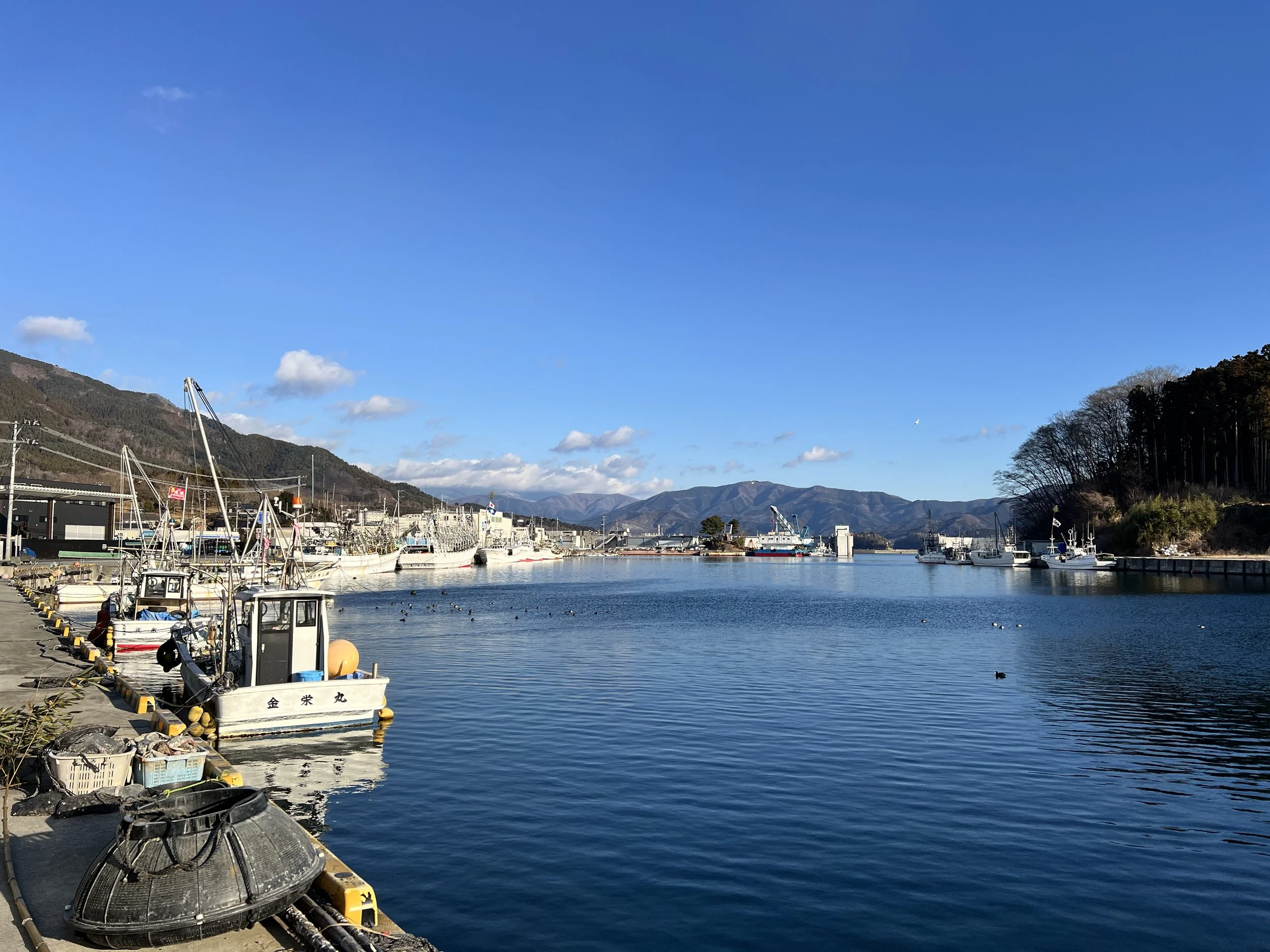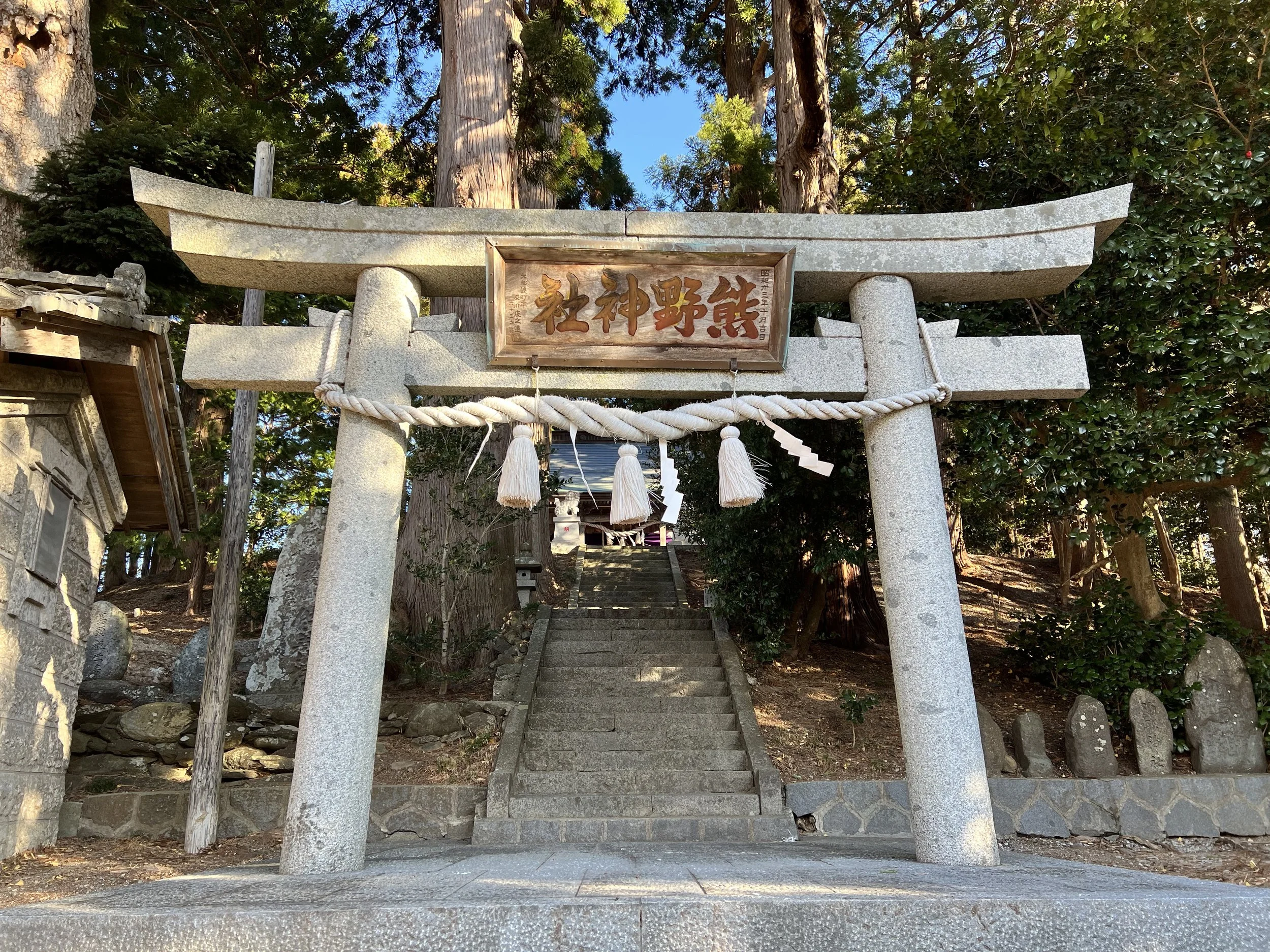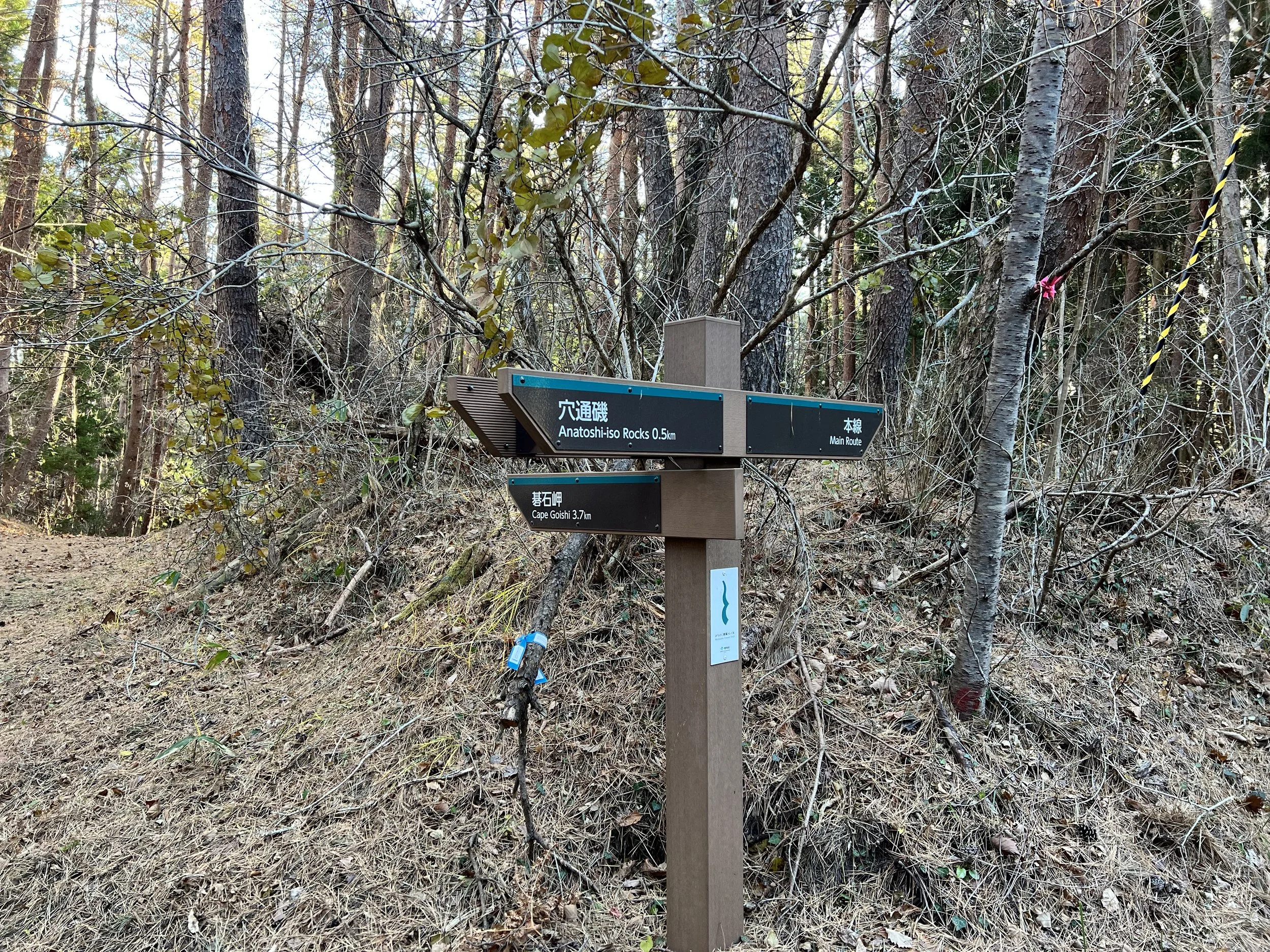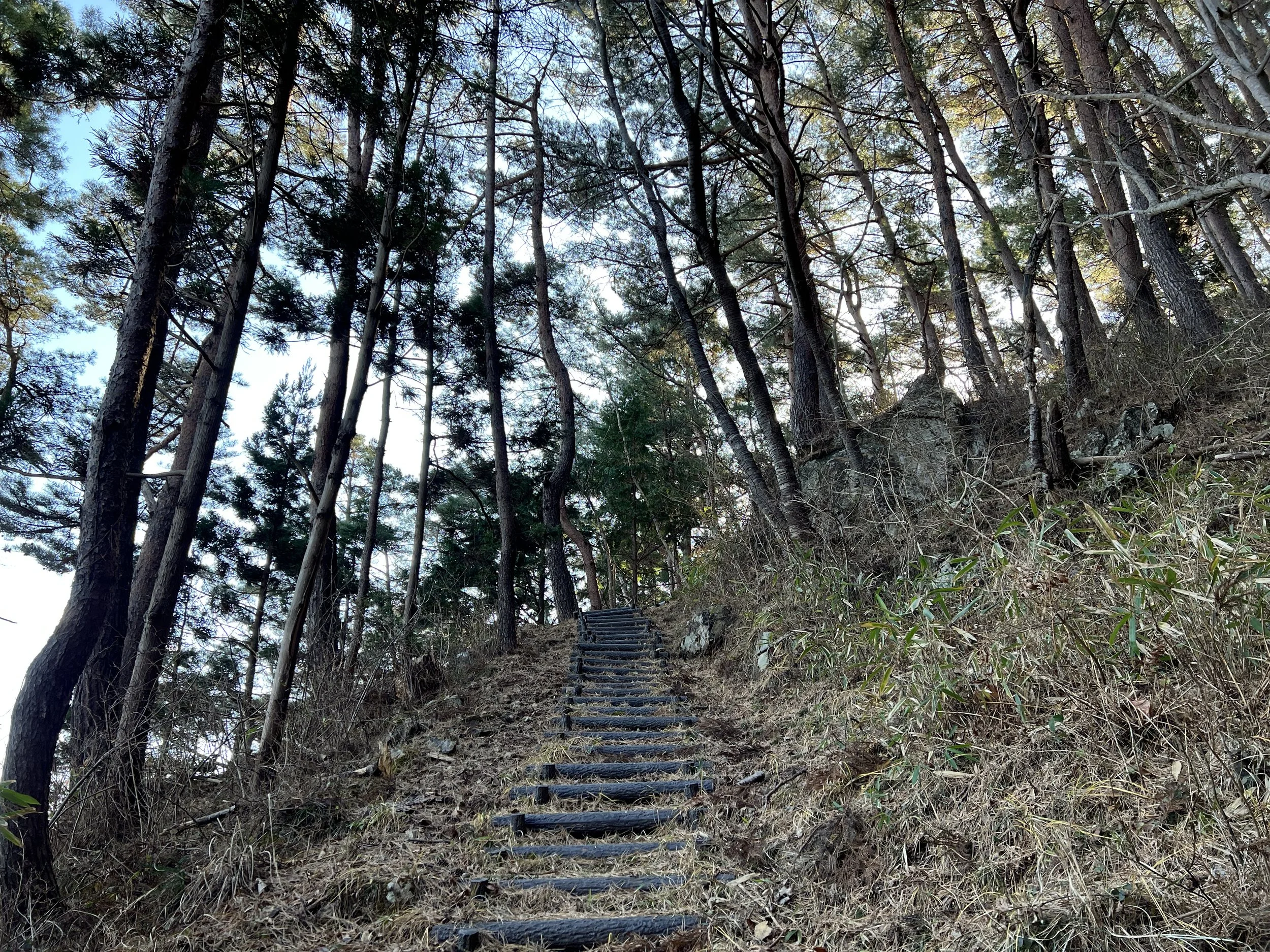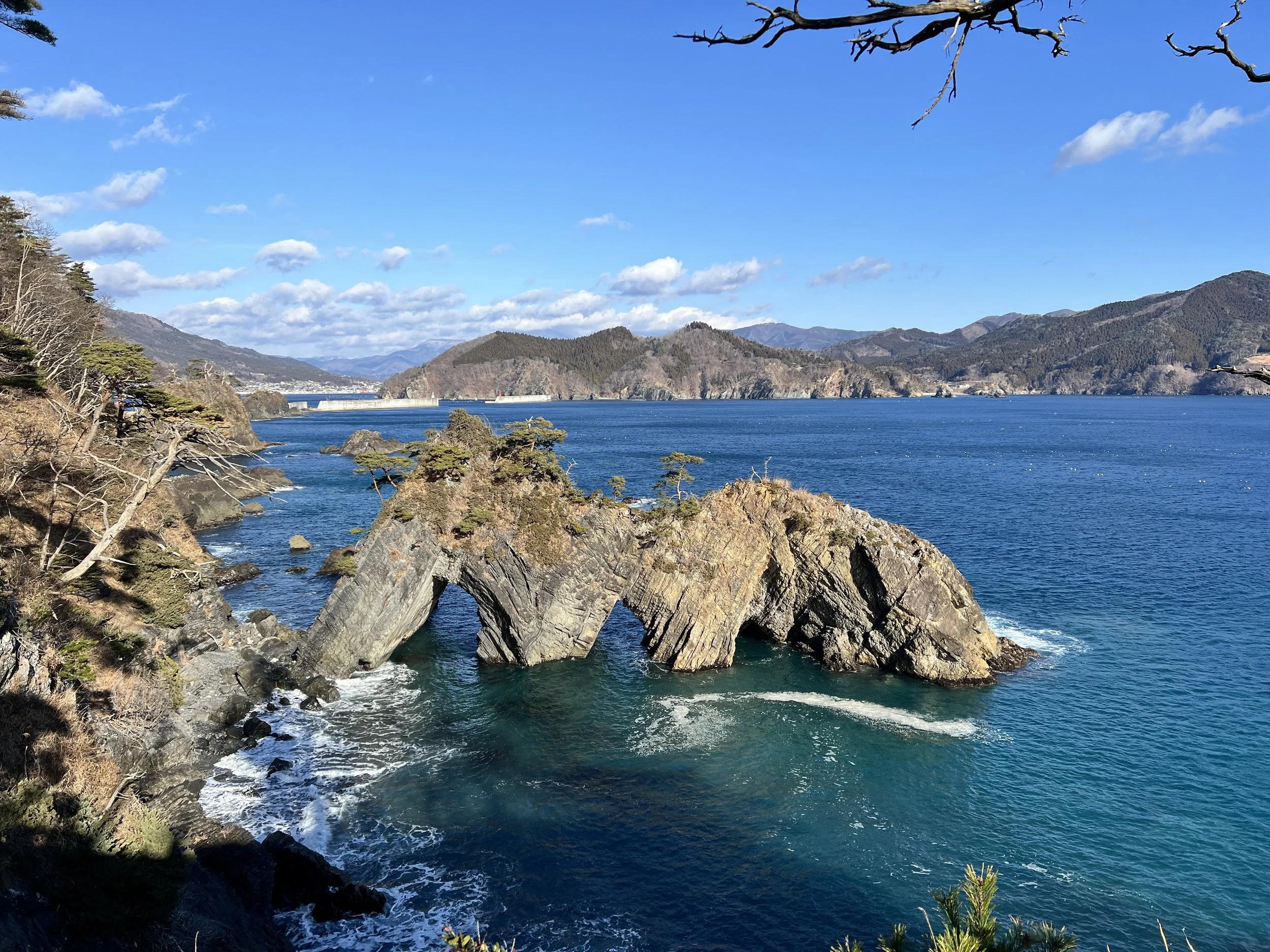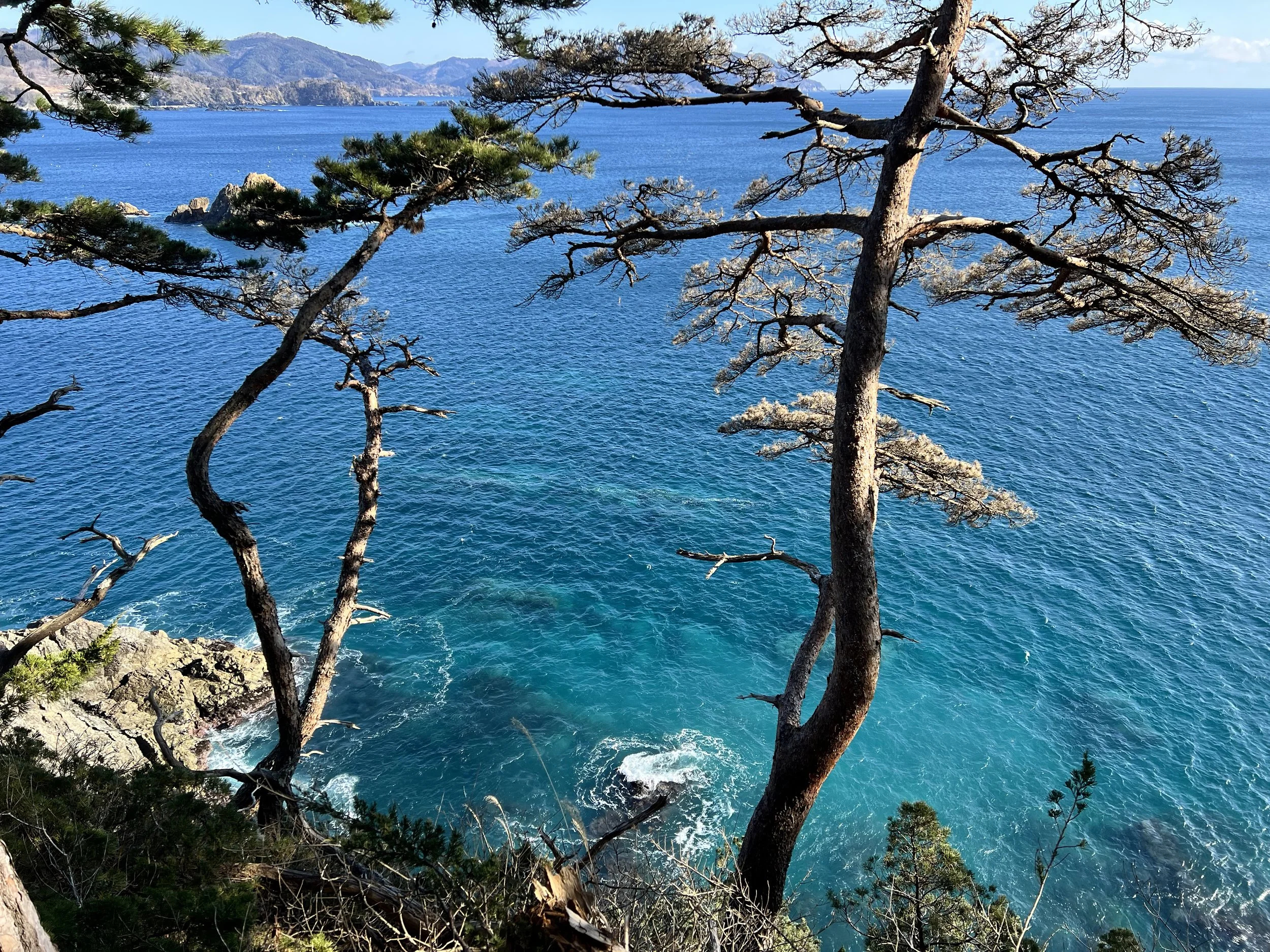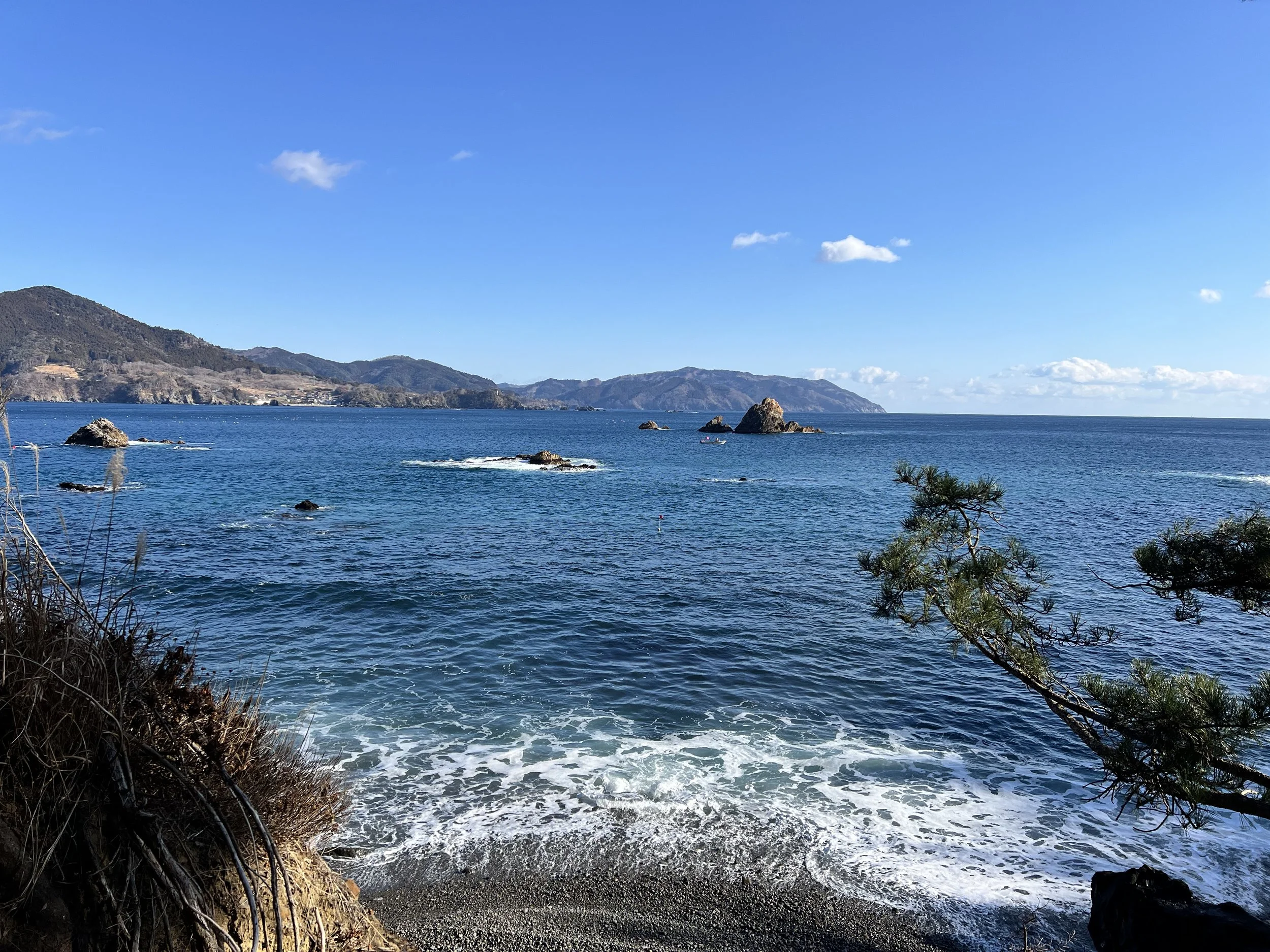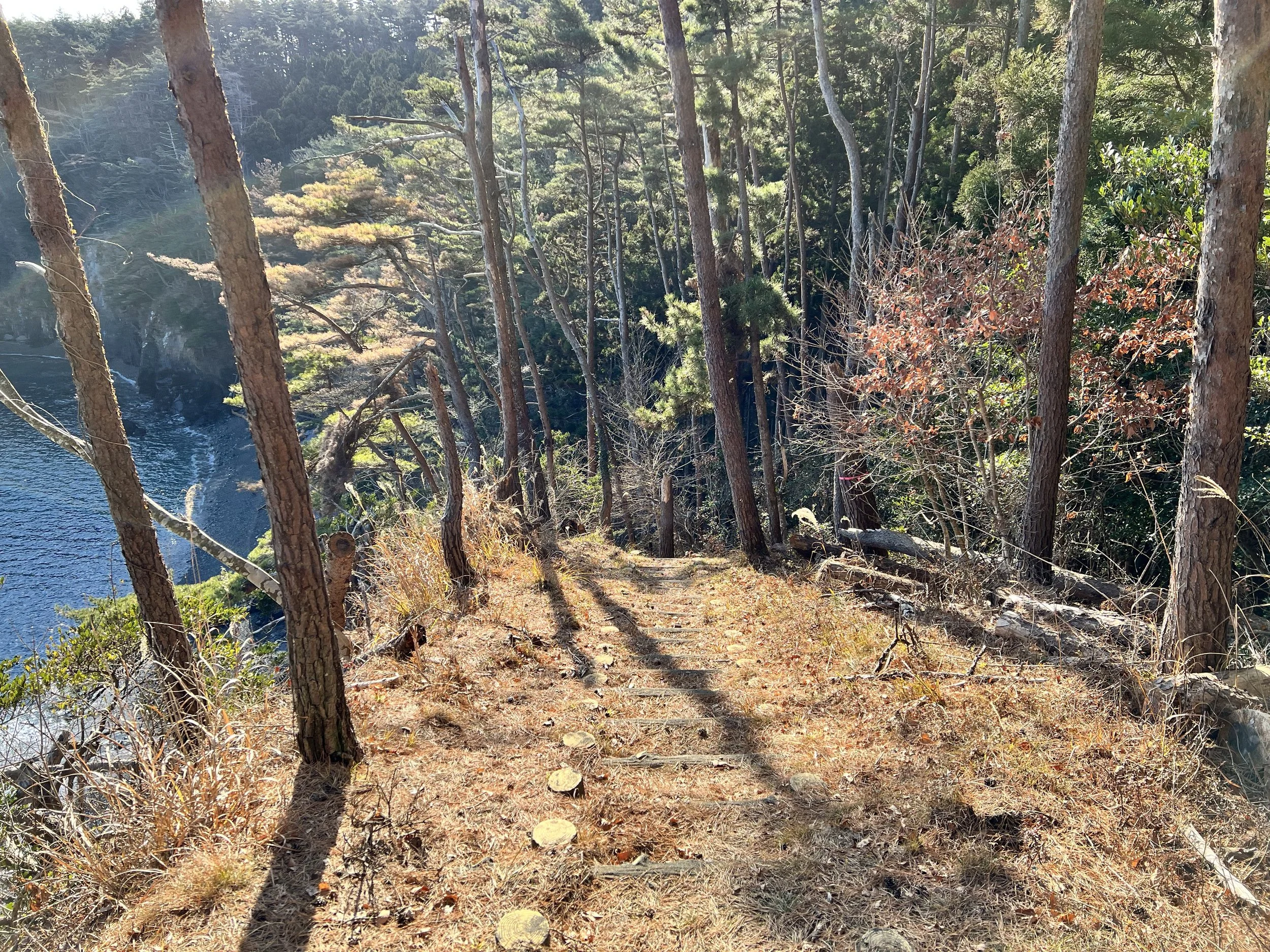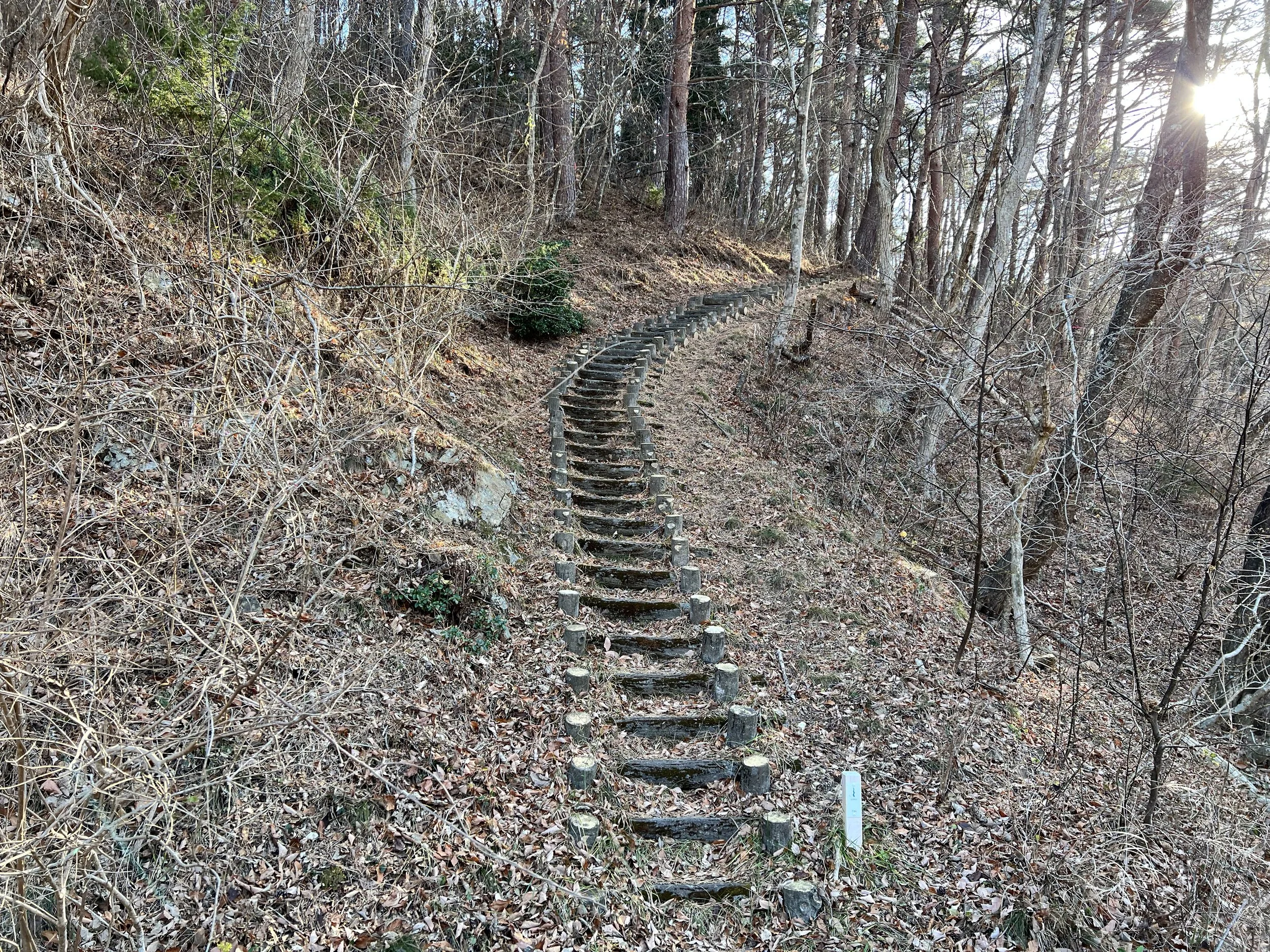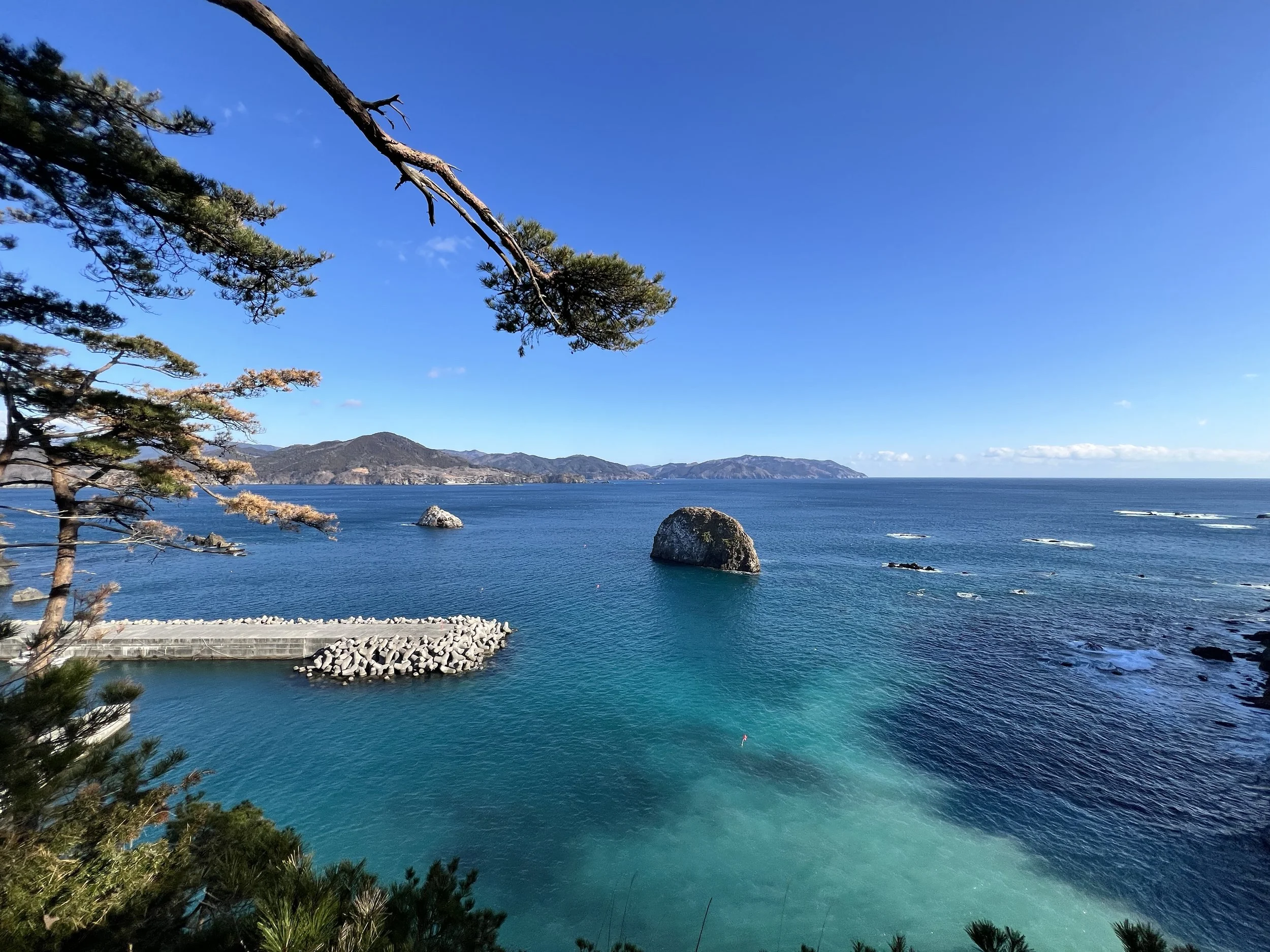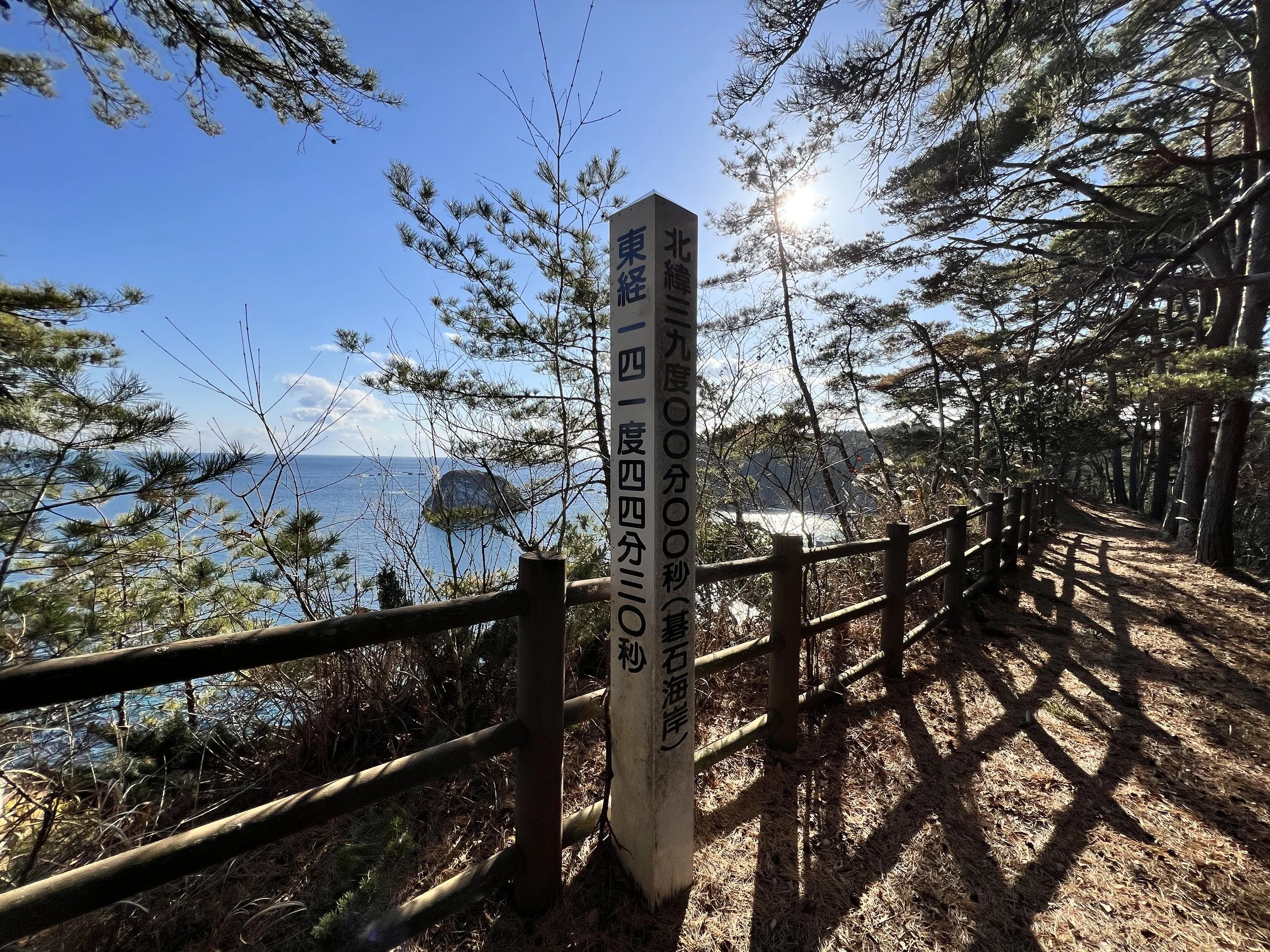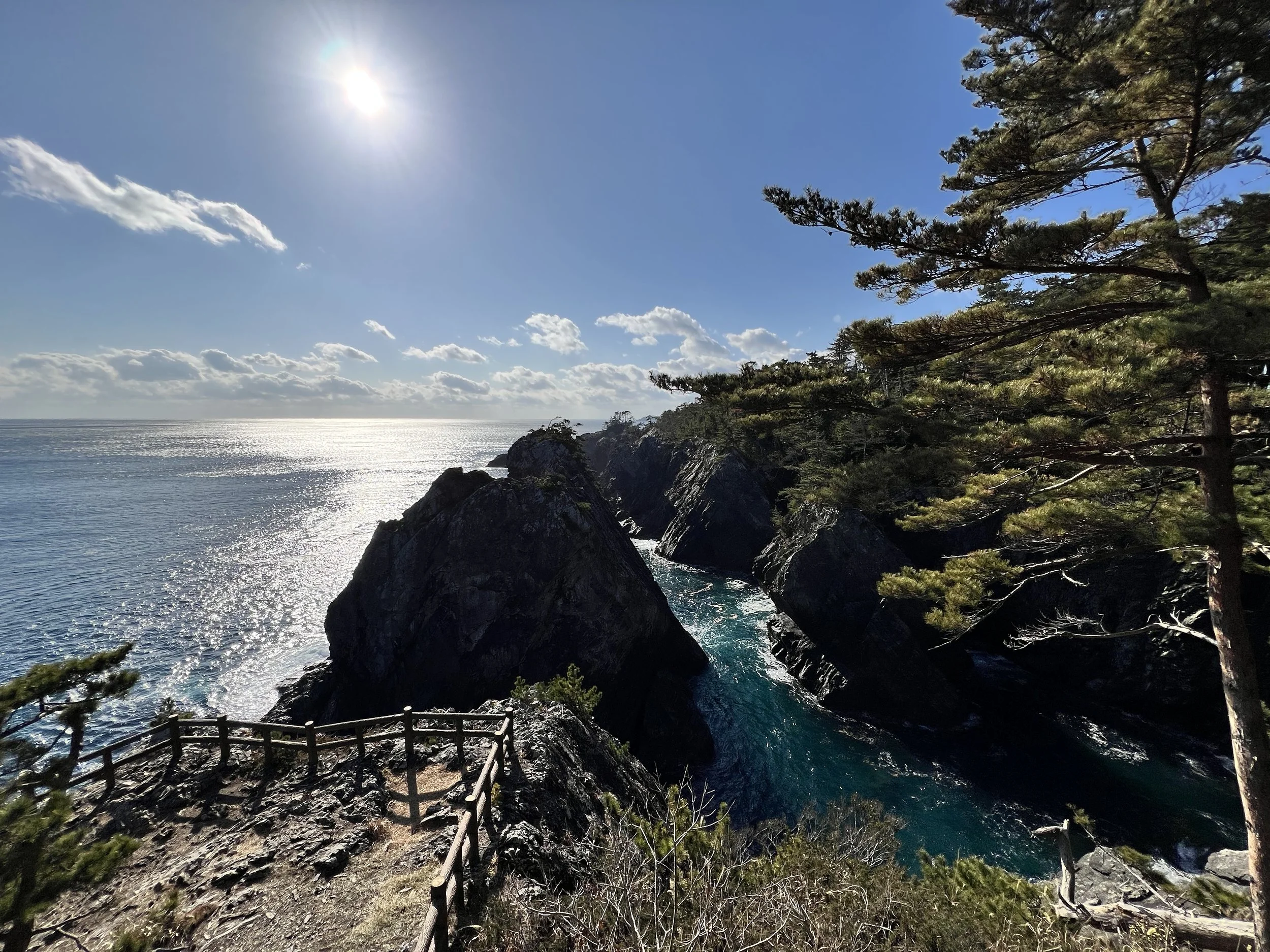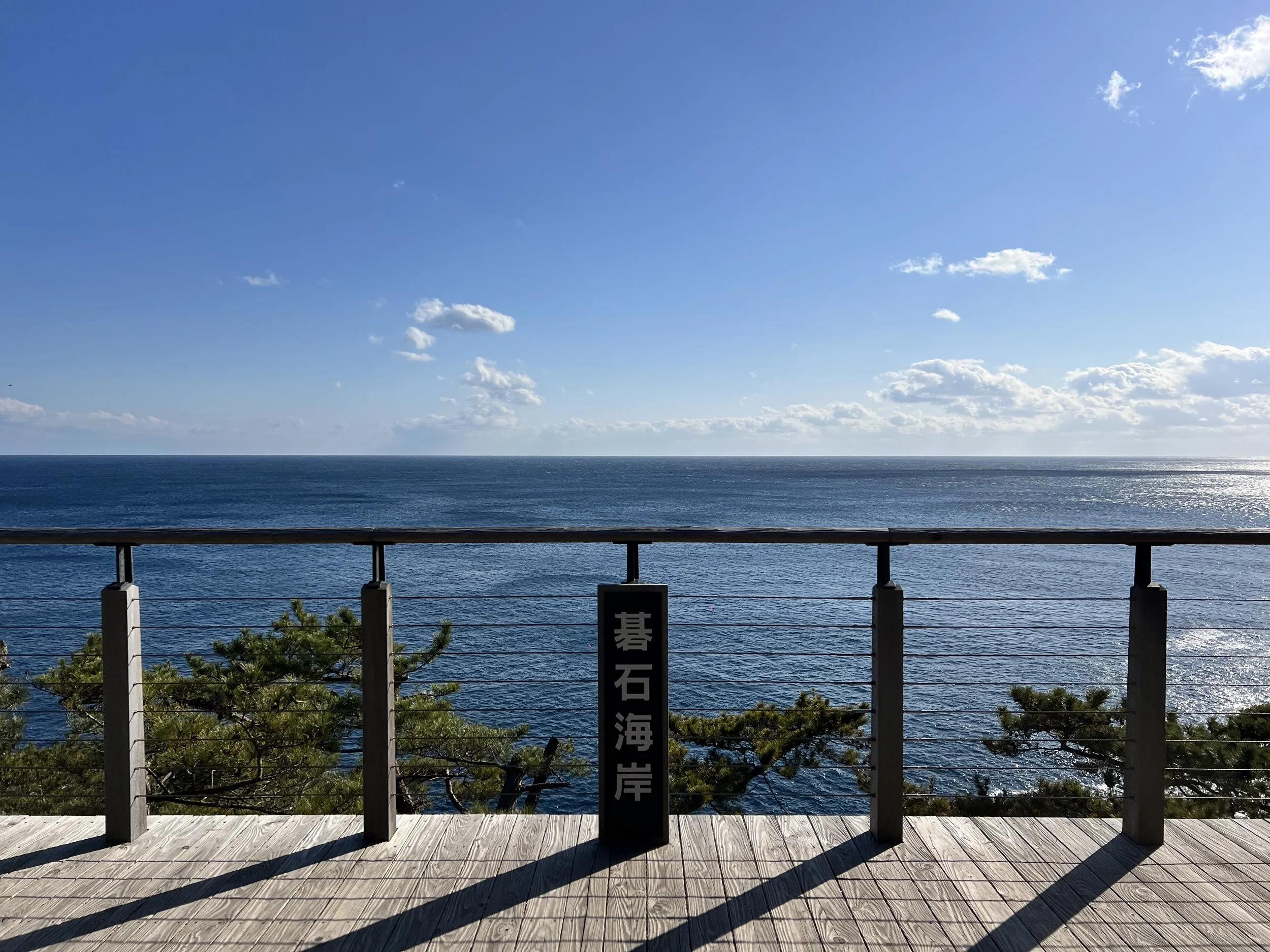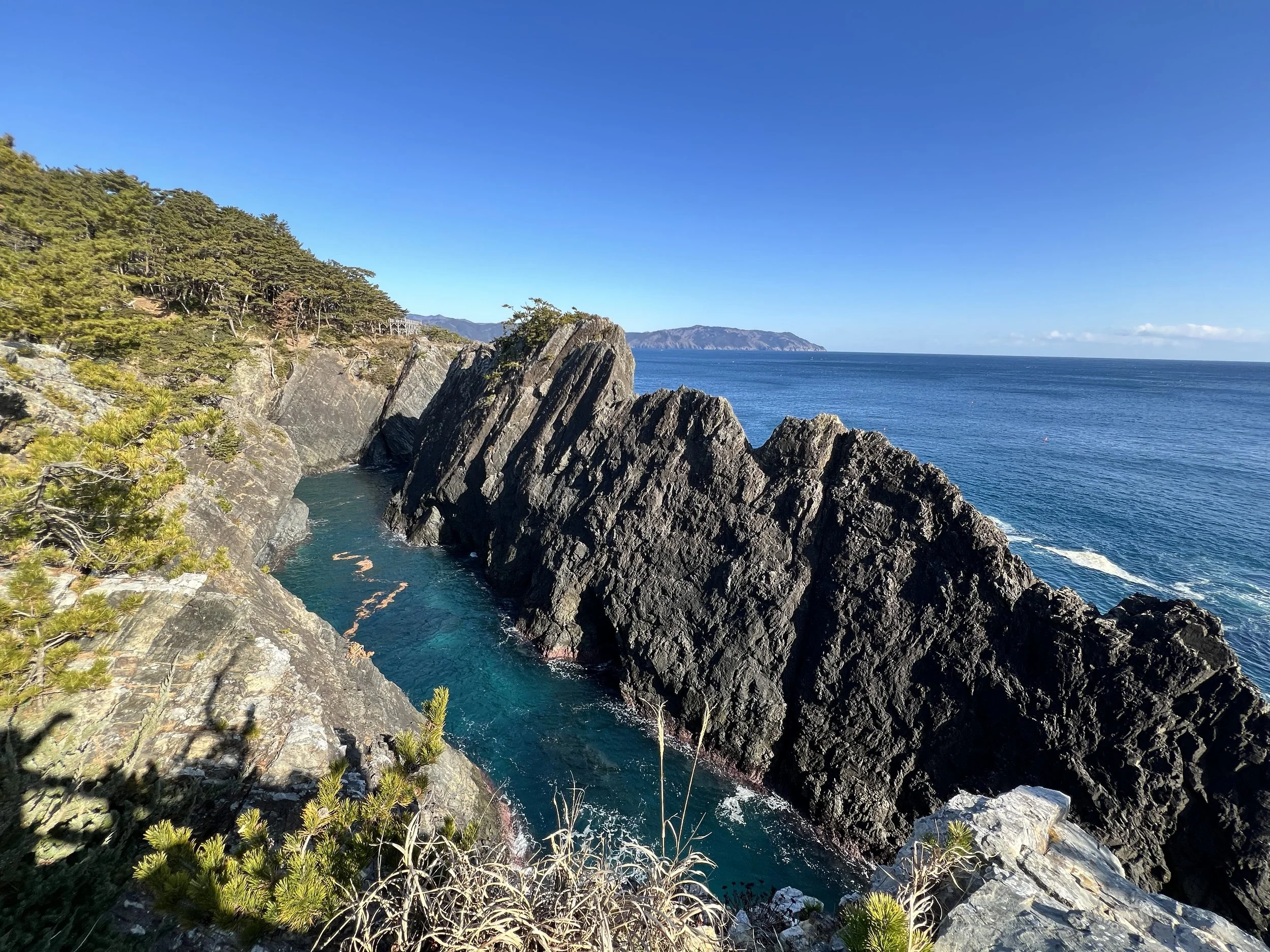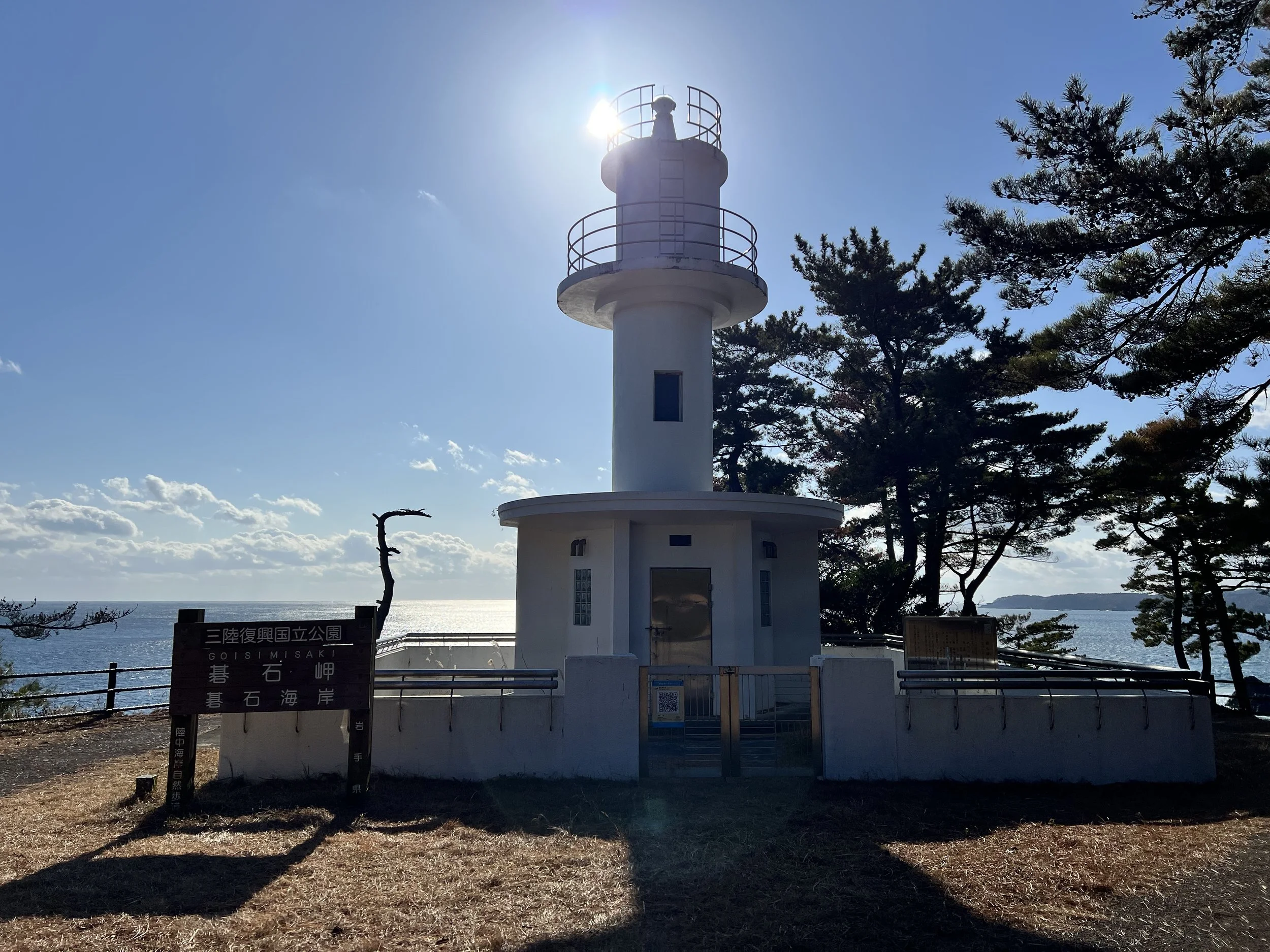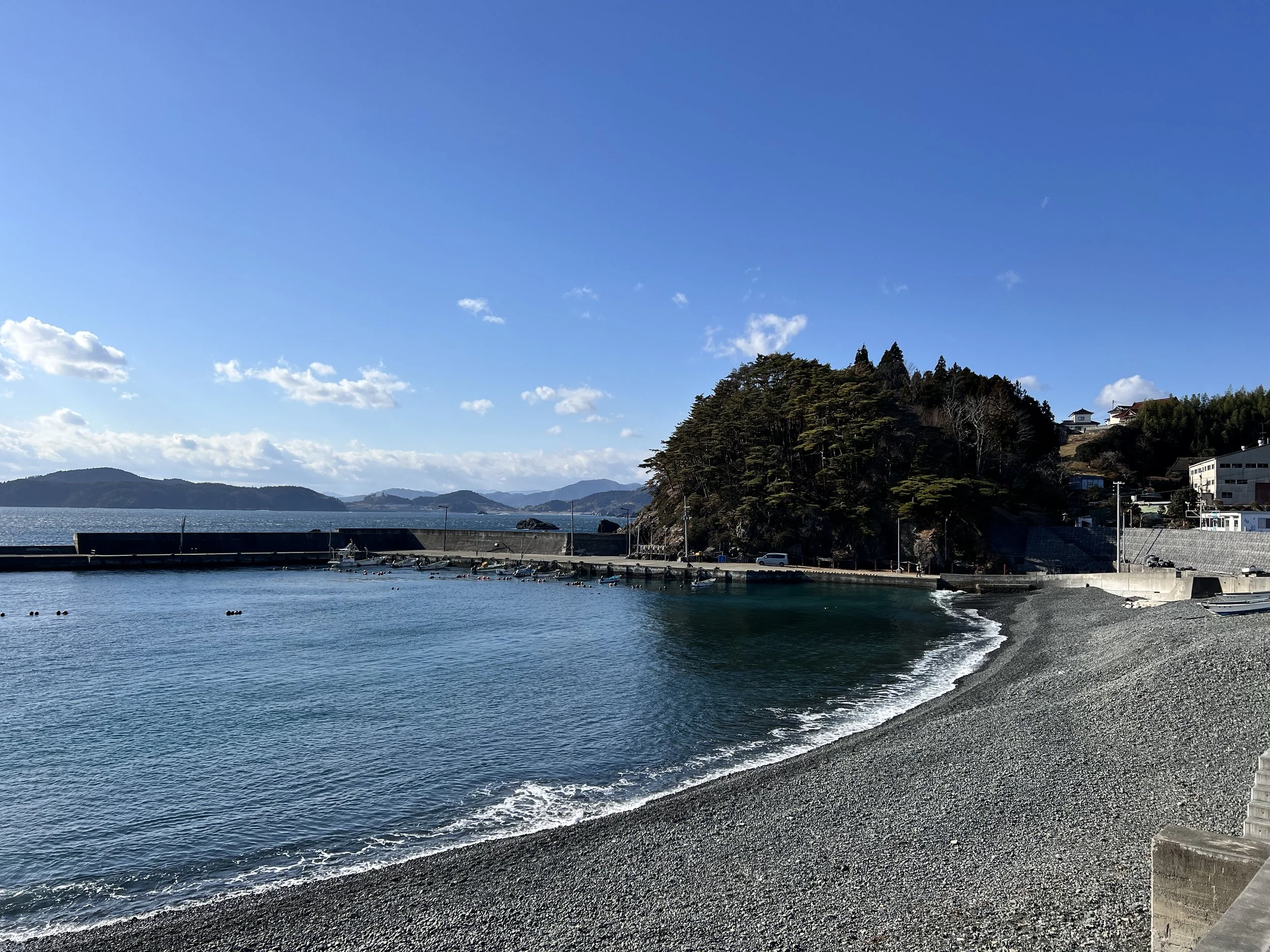Michinoku Coastal Trail - Hoso-Ura Station to Otomo Station - Iwate, Japan
I should’ve gotten snacks and a sports drink the night before. I didn’t think the convenience store would still be closed when I headed out to catch my bus toward Hoso-Ura Station. Looking at the map, I noticed another convenience store about a kilometre away near Hoso-Ura, so I decided to make that detour. With snacks, lunch, and drinks in hand, I was finally ready to set off along the Michinoku Trail.
The first part of the route followed along the fishing port before turning onto quiet, winding mountain roads. With no vehicles and tall trees lining the sides, it was surprisingly peaceful and scenic. This stretch continued for a while before leading me back toward the coast. The views were incredible—the colour of the ocean, the unique rock formations—I could’ve sat there all day listening to the waves and taking it all in.
The biggest highlight of today’s hike was the Goishi Coast. This area takes its name from the smooth black stones found along the shore, said to resemble the pieces used in the traditional Japanese board game Go. The trail here hugs the cliffs, occasionally descending toward rocky beaches, small fishing ports, and eventually leading to the Goishi Coast Information Centre.
There are campgrounds, barbecue areas, rest houses, and even a small museum nearby. With few facilities open along this section, I was relieved to find the toilets still accessible at the otherwise closed information centre—one of the downside of hiking right after New Year’s. I wandered the smaller trails looping around the area, once again amazed by the natural beauty. At Goishi Cape, not far from the lighthouse, I met a local woman feeding a few stray cats. She waved me over, though the cat got spooked before I could get too close.
From there, I made my way to Otomo Station. This stretch passed through smaller fishing villages and quiet harbours—a lovely contrast to the rugged coastline earlier in the day. Many of the small shrines I passed had memorial stones honouring those who lost their lives during the 2011 tsunami.
The wind started picking up as I neared my goal, growing stronger with each step. By the time I reached Otomo Station, I was barely keeping myself upright. Seeing the covered bus stop felt like a small victory. Despite the wind, this ended up being one of my favourite sections of the Michinoku Coastal Trail.
History & Background
The section from Hoso-Ura Station to Otomo Station passes through Goishi Coast (碁石海岸), one of the most iconic stretches of the Michinoku Coastal Trail and a designated part of Sanriku Fukko (Reconstruction) National Park. Known for its dramatic cliffs, sea caves, and black “go” stones that inspired its name, this coastline has long been celebrated for its natural beauty—even before the trail was officially established.
This area also carries deep emotional significance. The surrounding towns, including Ofunato, were heavily impacted by the 2011 Tohoku earthquake and tsunami. The creation of the Michinoku Coastal Trail was part of a larger effort to promote recovery, remembrance, and reconnection with the coast. Along this stretch, hikers often pass small memorials and shrines dedicated to the lives lost in the disaster.
Today, walking here offers more than just breathtaking scenery—it’s a chance to experience the resilience of coastal communities and the quiet strength of nature reclaiming the land.
Getting There
After the 2011 earthquake and tsunami, JR replaced the coastal railway line with a Bus Rapid Transit (BRT) system. To get to Hoso-Ura Station, you now take the BRT from Kesennuma Station, which takes about 1 hour and 6 minutes. It’s a smooth ride along the coast, and you get a good sense of the area as you travel.
Route Overview
Distance: 16.82 km (Hoso-Ura Station → Otomo Station)
Total elevation gain: 587 m
Duration: 3 hr 39 min (with breaks 3 hr 52 min)
Difficulty: Intermediate
Cost Breakdown
Bus: Kesennuma Station → Hoso-Ura Station — ¥680
Bus: Otomo Station → Kesennuma Station — ¥590
